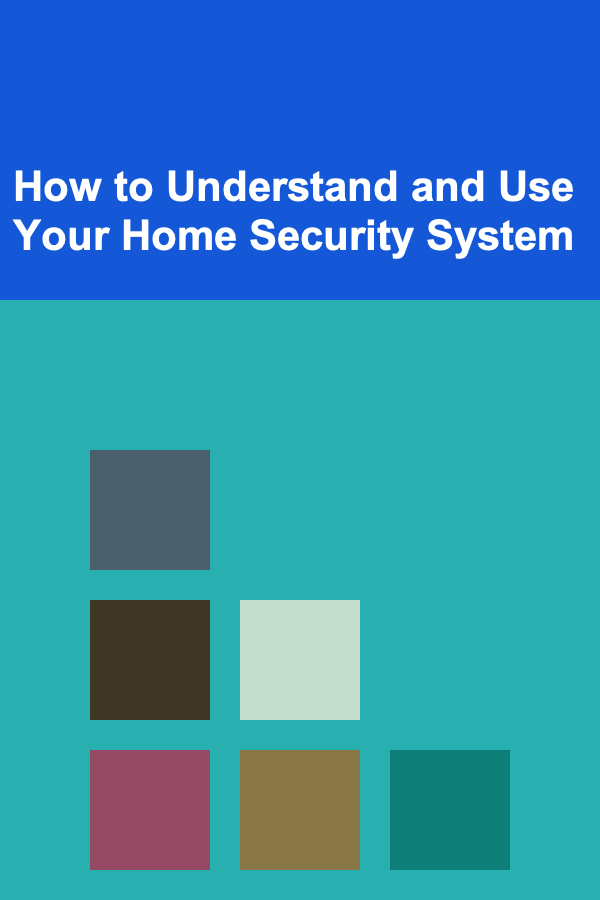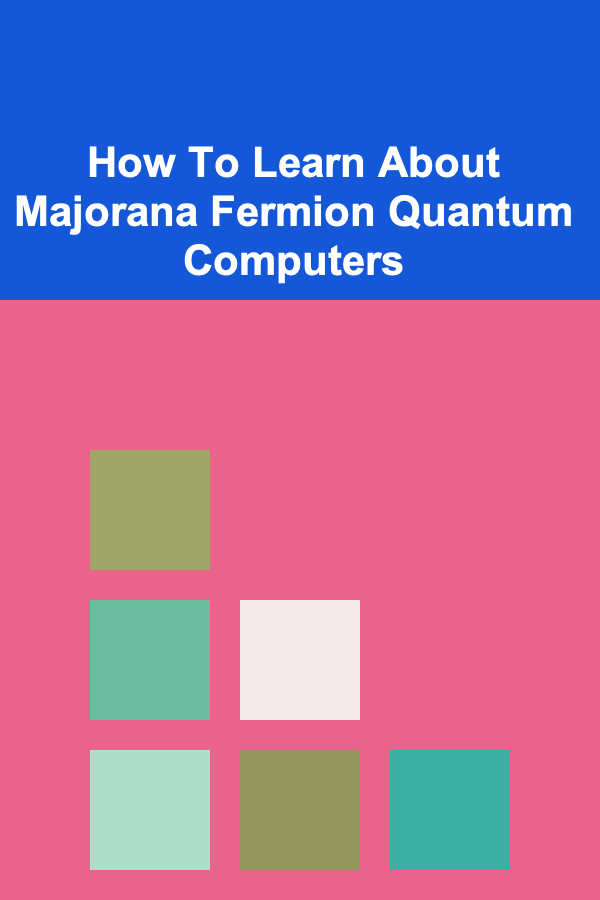
How to Choose the Perfect Student Planner for Your Learning Style
ebook include PDF & Audio bundle (Micro Guide)
$12.99$5.99
Limited Time Offer! Order within the next:
Not available at this time

In the fast-paced world of academia, staying organized is key to academic success. One of the best tools a student can have is a planner. However, with so many options available, choosing the right student planner can be a daunting task. The key to selecting the perfect planner lies in understanding your learning style and how different planners cater to various organizational needs.
In this article, we'll dive deep into the process of selecting the ideal student planner based on your individual learning style. Whether you're a visual learner, auditory learner, kinesthetic learner, or prefer a more structured approach, there's a planner out there to suit your needs.
Understanding Your Learning Style
Before jumping into the world of student planners, it's important to first understand your learning style. A learning style refers to the preferred way an individual processes and retains information. There are four main learning styles:
- Visual Learners: These individuals learn best through seeing. Diagrams, charts, graphs, and written instructions help them absorb information.
- Auditory Learners: People with this style excel through listening. They may prefer lectures, podcasts, or discussions to understand and retain information.
- Kinesthetic Learners: Kinesthetic learners learn by doing. They benefit from hands-on activities and may prefer planners that allow them to write or physically manipulate their schedules.
- Reading/Writing Learners: These individuals prefer reading and writing as their main method of learning. They benefit from note-taking, written instructions, and writing summaries.
Once you have identified your learning style, you can better understand which features to look for in a planner. Let's break down the ideal planner for each learning style.
Planners for Visual Learners
Visual learners thrive on seeing information laid out in an organized and aesthetically pleasing way. When selecting a planner, these students should consider the following features:
Key Features:
- Color-Coded Systems: Visual learners benefit from color-coding. A planner with different colors for subjects, assignments, and deadlines can help to categorize tasks and make them stand out. For example, using one color for exams and another for assignments can help a visual learner instantly see what needs attention.
- Weekly or Monthly Spreads with Space for Notes: Visual learners tend to absorb information more effectively when they can view it in a grid format. A planner with ample space for weekly or monthly views allows for a clear overview of upcoming tasks and long-term goals.
- Incorporation of Visual Elements: Some planners incorporate images, diagrams, and charts, which can help visualize schedules or study goals. Having a section for mind mapping or goal tracking could be beneficial.
- Bullet Journals: Bullet journals are a great option for visual learners, as they allow for customization with diagrams, drawings, and creative layouts. Bullet journals offer the flexibility to organize information in a visually appealing way, which can increase engagement and motivation.
Recommended Planners:
- Erin Condren LifePlanner: Known for its vibrant colors and customizable layouts, this planner is a great fit for visual learners.
- The Happy Planner: This planner offers a variety of stickers, colorful designs, and layout options, allowing students to make the planner as visually stimulating as they desire.
Planners for Auditory Learners
Auditory learners process information best through sound. While planners are primarily visual, auditory learners can still choose planners that cater to their need for auditory stimulation. These planners should incorporate features that enhance their ability to absorb and review information through hearing.
Key Features:
- Digital Planners with Audio Features: Since auditory learners respond well to hearing instructions or reminders, a digital planner with audio capabilities can be beneficial. Look for planners that allow you to record voice memos or integrate with audio reminder apps.
- Integration with Podcasts or Lectures: A planner that allows for easy integration with educational podcasts or lecture recordings is ideal for auditory learners. For example, planners with space to jot down podcast recommendations or lecture notes can make it easier for auditory learners to follow their academic schedule.
- Daily or Weekly Check-ins via Voice: A planner with an option to record audio notes or provide auditory reminders can help auditory learners stay organized while maintaining their focus on sound-based learning.
Recommended Planners:
- Google Calendar (with voice reminders): Google Calendar allows for easy scheduling and includes a voice feature for reminders, making it a great option for auditory learners.
- Evernote: While primarily a note-taking app, Evernote can be customized for planners by adding audio recordings of lectures and podcasts. This way, auditory learners can combine written schedules with auditory content.
Planners for Kinesthetic Learners
Kinesthetic learners prefer to learn by doing and may have trouble sitting still for long periods of time. For these learners, a planner should encourage physical interaction and movement. Kinesthetic learners can benefit from planners that allow them to take action and engage physically with their organization process.
Key Features:
- Hands-On Planning: A planner that encourages writing, sketching, or doodling can engage kinesthetic learners by allowing them to interact with their schedule in a tactile way. Consider planners that feature large sections for writing or even those that allow students to rearrange or move parts of the planner, such as stickers or notes.
- Planner with Built-in Checklists or Tasks: Kinesthetic learners thrive on completing tasks. A planner that includes checklists or tasks that require physical completion (e.g., checking off a box after finishing a task) can provide the satisfaction of physical progress.
- Flexibility in Layouts: A planner that offers flexibility in its layout, allowing kinesthetic learners to create their own sections for different types of tasks (study sessions, projects, etc.), can make the planner more engaging.
- Planner with Physical Activity Reminders: Kinesthetic learners may also benefit from planners that incorporate physical activity reminders, helping them stay active while also staying on track with their academic goals. For instance, planners with space to track exercise or movement goals can engage these learners physically and mentally.
Recommended Planners:
- Moleskine Planner: Moleskine planners are ideal for kinesthetic learners because they allow for a great deal of personal interaction with the planner. The smooth paper and high-quality design invite students to write, doodle, and create layouts that fit their learning style.
- Leuchtturm1917 Bullet Journal: This journal is excellent for those who enjoy creating their own layout and organizing their schedule in a physical, hands-on way.
Planners for Reading/Writing Learners
Reading/writing learners excel at absorbing information through reading and writing. These learners prefer to take detailed notes and organize information in written formats. For these learners, a planner should emphasize the written word and provide plenty of space for writing tasks, reflections, and notes.
Key Features:
- Ample Writing Space: A planner with plenty of space for writing detailed notes and reflections will be ideal for reading/writing learners. These students often benefit from breaking down tasks into smaller steps and writing them out.
- Daily Logs and Reflection Sections: A planner that offers space for daily logs, reflections, or journal entries can help reading/writing learners stay engaged and on top of their schedule.
- Task Lists and Written Goals: Reading/writing learners thrive when they can write down their tasks and goals. A planner that provides checklists, task lists, and sections for writing reflections will help these learners organize their thoughts and track their progress.
- Incorporation of Inspirational Quotes or Text: Many reading/writing learners benefit from motivational quotes or short readings integrated into their planners. These small pieces of text can provide inspiration and encourage focus.
Recommended Planners:
- The Passion Planner: This planner provides space for reflections, goals, and detailed task lists, making it ideal for reading/writing learners.
- Full Focus Planner: Designed to help students set and track their goals, this planner allows for extensive written entries, making it perfect for those who learn by writing.
Conclusion
Choosing the perfect student planner requires understanding your learning style and selecting a planner that complements your preferences. Visual learners should look for colorful and visually appealing planners with ample space for diagrams and schedules. Auditory learners benefit from planners that incorporate audio reminders or digital features. Kinesthetic learners should opt for planners that engage them physically, allowing them to write, move, and check off tasks. Finally, reading/writing learners thrive in planners that offer ample writing space for notes, lists, and reflections.
By aligning your planner with your learning style, you'll create a tool that enhances your academic performance and supports your organizational goals. No matter your learning style, the perfect planner can transform your approach to studying, helping you stay organized and focused throughout your academic journey.

How to Optimize Your Pet Supplies Website for Higher Conversions
Read More
How to Store and Organize Your Tools in a Small Workshop
Read More
How to Turn Your Attic Into a Usable Space During Renovation
Read More
How to Understand and Use Your Home Security System
Read More
How To Learn About Majorana Fermion Quantum Computers
Read More
How to Build a Small-Scale Solar Water Heater
Read MoreOther Products

How to Optimize Your Pet Supplies Website for Higher Conversions
Read More
How to Store and Organize Your Tools in a Small Workshop
Read More
How to Turn Your Attic Into a Usable Space During Renovation
Read More
How to Understand and Use Your Home Security System
Read More
How To Learn About Majorana Fermion Quantum Computers
Read More